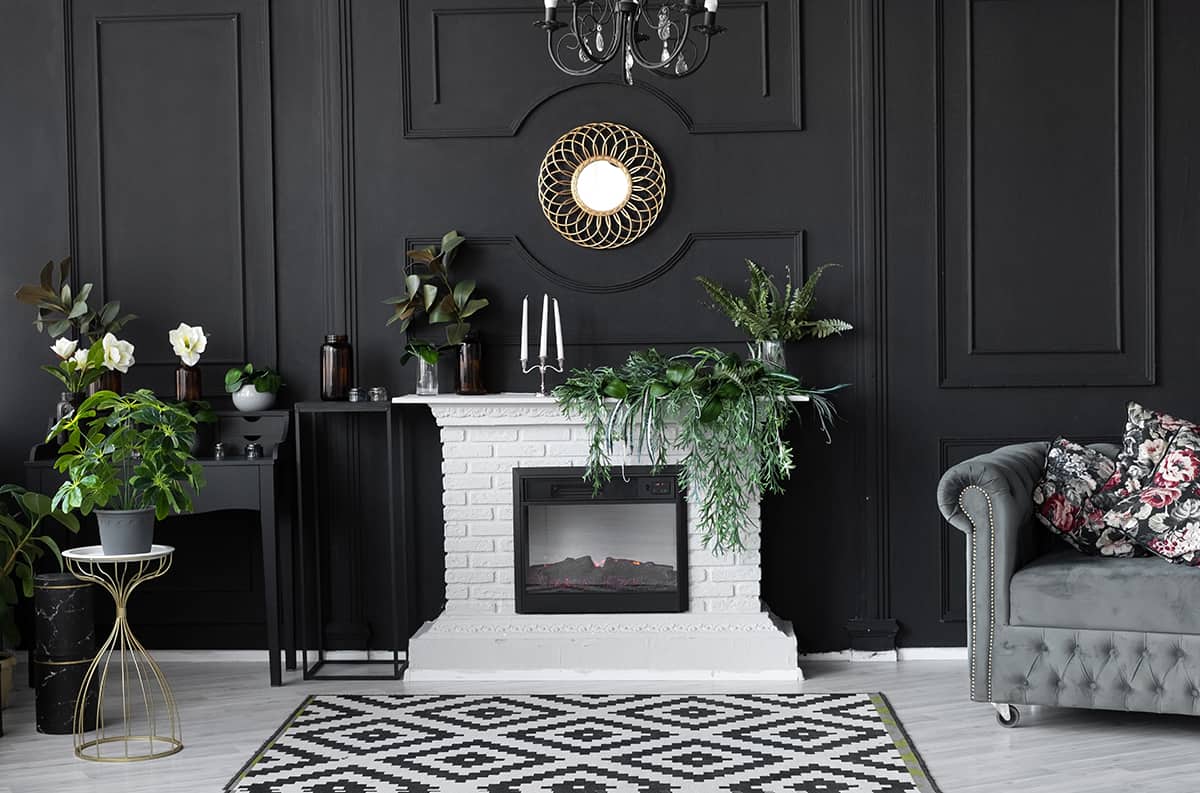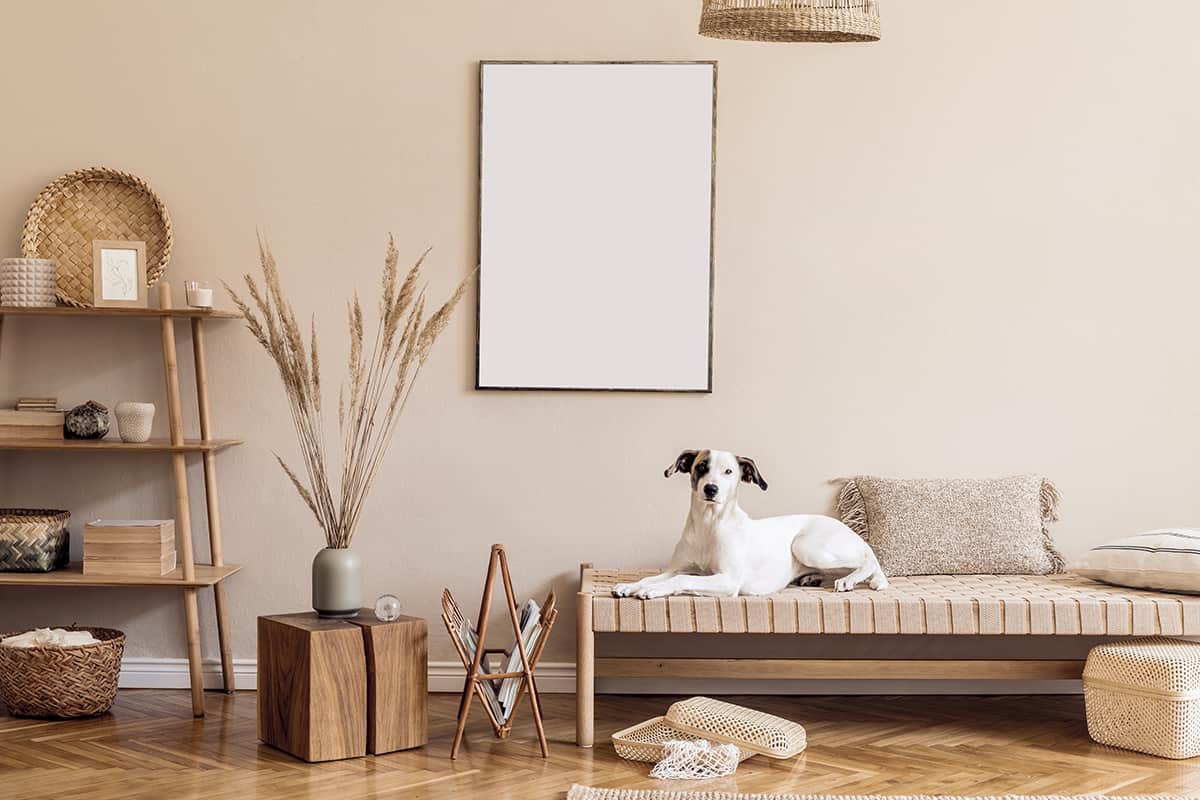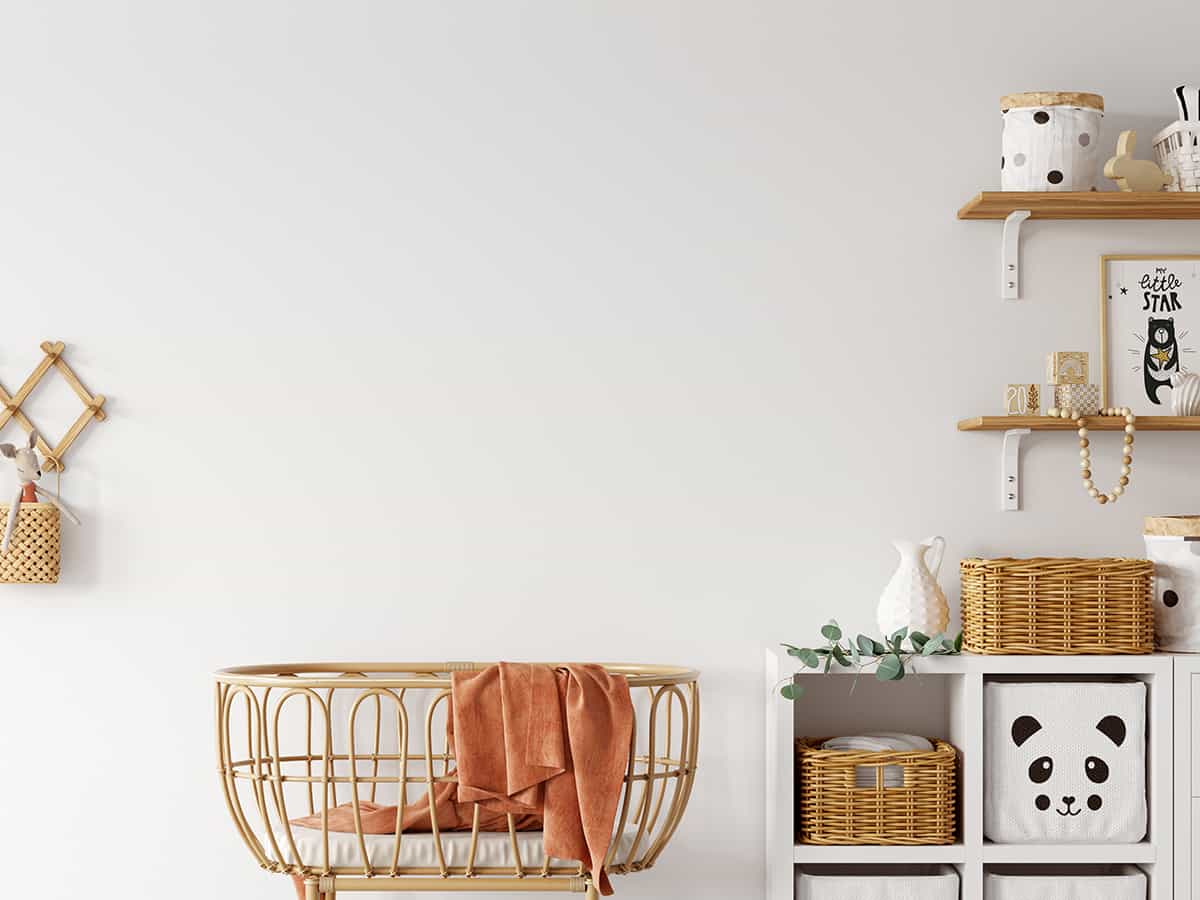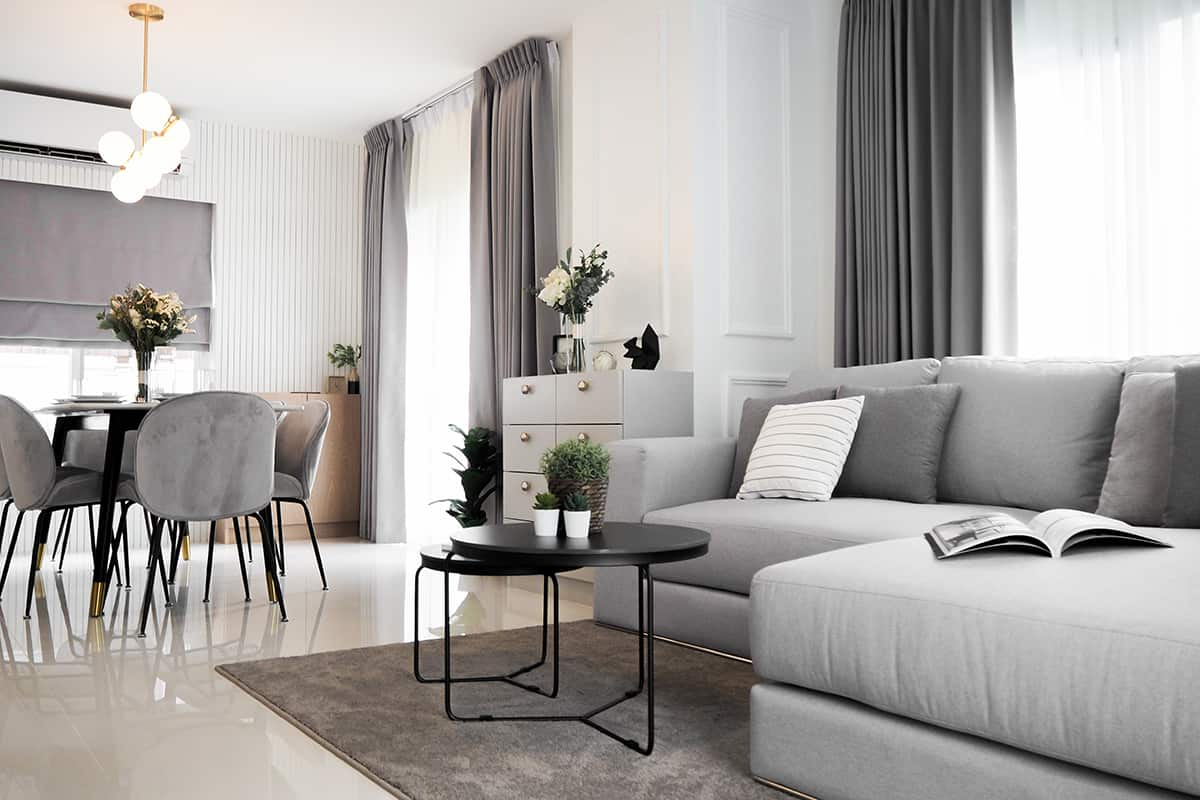Neutral colors are important in interior design and feature heavily in most people’s homes. Understanding neutral colors, how they work, and how to use them can help you achieve a style in your home that looks as though it was designed by a professional.
Neutrals are vital for creating balance and ensuring a pleasant ambiance that is not overwhelming or overstimulating. Here we look at the basic principles of neutral colors and how to use them around the home.
What is a Neutral Color?
Neutral colors are those which are muted and lack any presence of colors that you would find on the color wheel. Neutral in its truest sense means ‘without color,’ but in fact, many neutral shades have undertones in various colors.
Most commonly, neutral colors have low saturation, but this isn’t always the case. Neutral colors include white, black, gray, beige, and brown. They are widely used in interior design because they offer numerous benefits.
Benefits of Neutral Colors in Home Decor:
Versatile
Neutral colors are incredibly versatile, which makes them a great option as a base color in home decor. It doesn’t matter which style you are trying to achieve; you can guarantee that neutrals will work with it.
They could be used to create a minimalist look, an art deco style, a rustic design, or almost any other interior design style you could imagine.
They are also versatile in the sense that they can be paired with almost any other color. You can paint your room in a neutral shade and then add a feature wall or splashes of color in any other color you like.
Calming or Cozy
Neutral colors have the effect of being calm and soothing or cozy and intimate. Whichever atmosphere you are going for, you can expect that neutral shades will add a feeling of relaxation to a space, which is how most people want to feel in their homes.
Perfect Base
One of the reasons neutral shades are so popular in home decor is because they make decorating a space easier.
If you paint your room in a neutral shade, you can simply change your accessories when you want to switch up the color scheme or create a new style in the space. This is a much less involved and less expensive task compared to completely redecorating the whole room and repainting the walls.
As neutral colors will work with any other color as an accent shade, you could alter the mood in your room each season. For example, get out your bright and cheerful cushions and accessories in summer, then swap them out for orange or red tones in fall and winter to achieve a more festive feel.
Mass Appeal
Color choice is a very personal thing because some colors appeal to some people, while those very same colors may be offensive to other people. The great thing about neutral colors is that they have mass appeal. They are very understated and muted, and therefore it’s very rare that anybody would have an adverse reaction to neutral shades.
This is why you should always paint your home in neutral colors if you intend to sell the property because they are safe shades that won’t have the effect of making the home undesirable to anyone.
Neutral colors are widely appreciated and are able to show a home in its best light, where people can imagine themselves living in the house because it isn’t overwhelmed with another family’s personality.
Types of Neutral Shades
Pure Neutrals
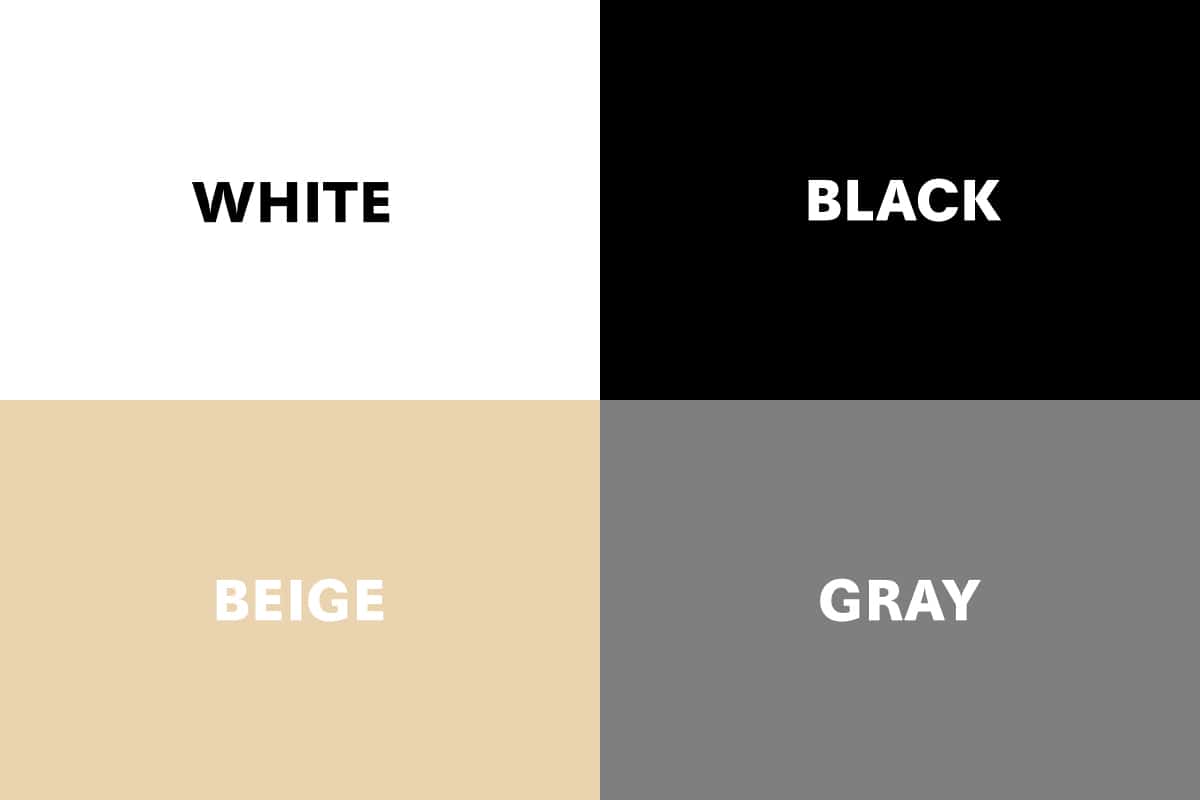
Pure neutral shades are those which don’t have any additional colors added to them. These include white, black, beige, and gray.
However, when it comes to paint colors and using neutral shades in home decor, for example, on curtains, wallpaper, or soft furnishings, neutral colors are very rarely pure.
They typically have an undertone of color running through them which can influence the feel of the room and look different depending on the lighting. See some neutral-colored inspirations in our articles ‘ 13 Best Colors that Go with White (with Pictures) ‘, ‘ 16 Colors That Go Well with Beige ‘.
Warm Neutrals
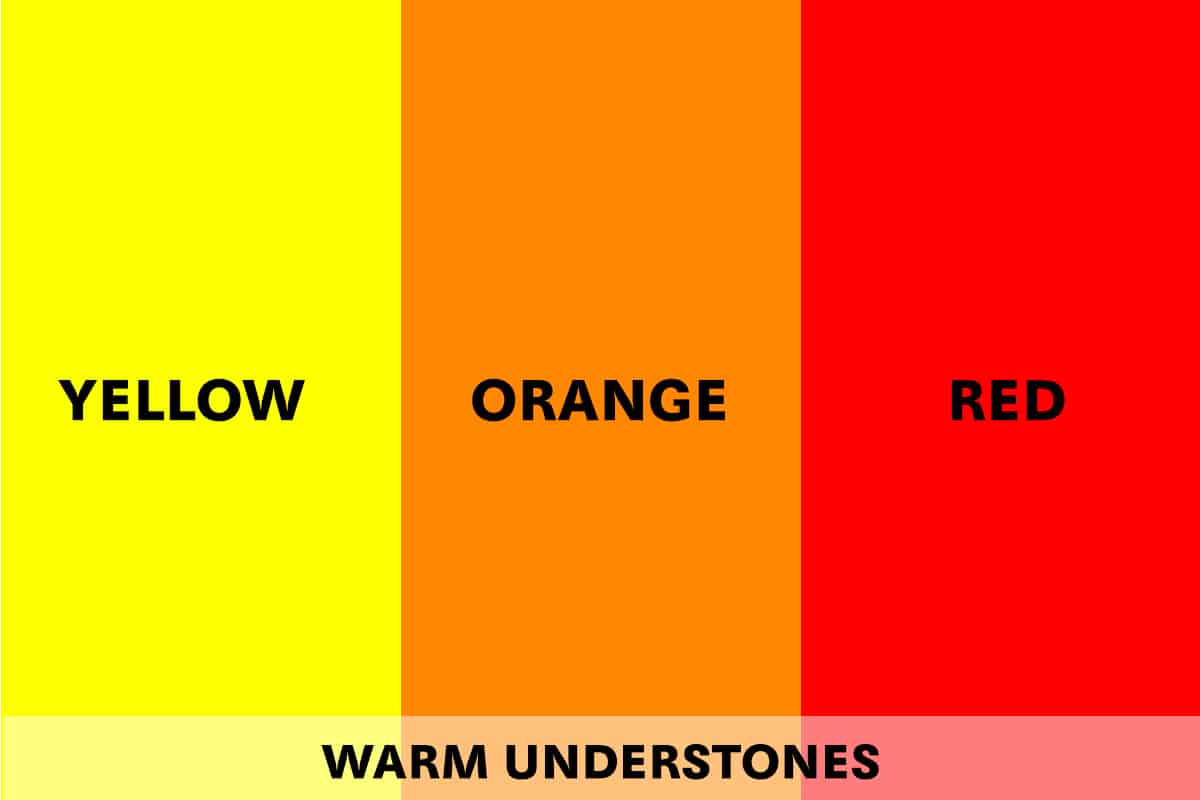
Warm neutrals are those which have colors added to them which are naturally warm. This could include, for example, a pure neutral color such as gray, which has orange added to it to make it a warmer shade of gray. The amount of color which is added to the pure neutral can affect how bright it is and how saturated or vibrant the resulting color is.
If you want to create an inviting and cozy atmosphere in a room with a neutral color, choose one which has warm undertones. This will include undertones that are yellow, orange, or red.
Cool Neutrals
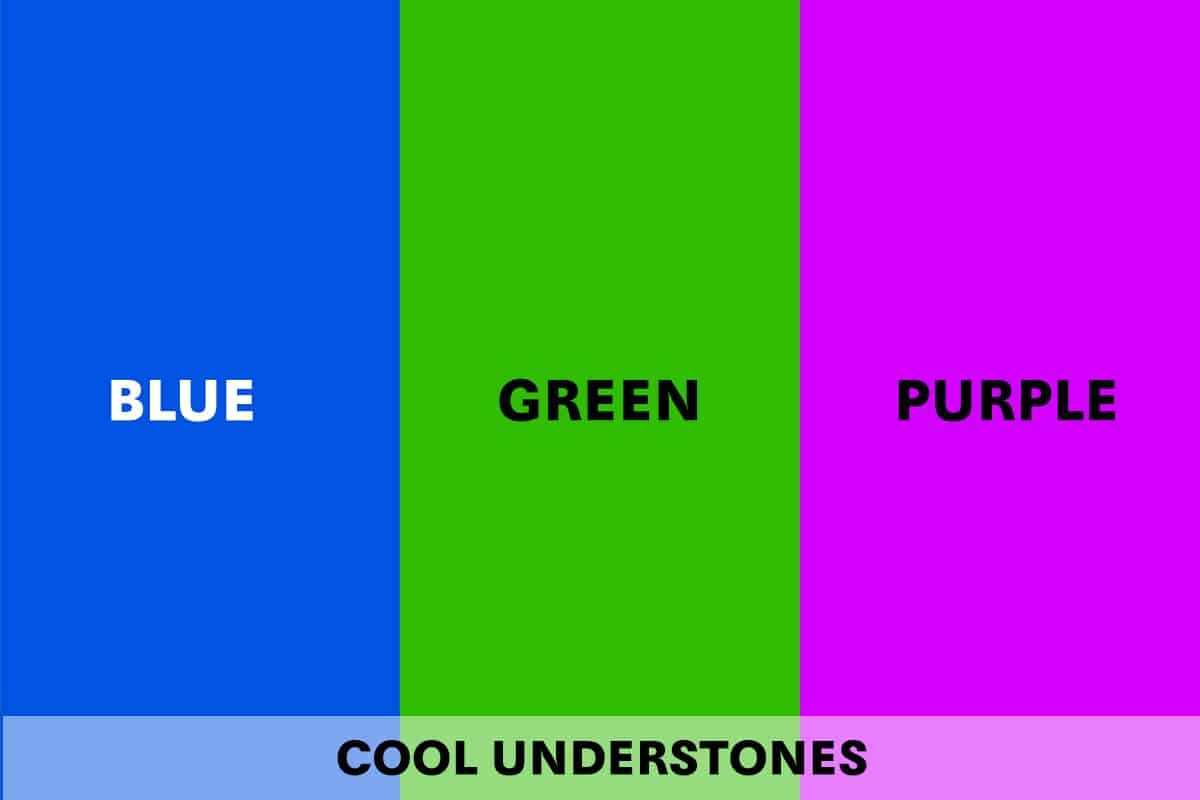
Cool neutrals are, of course, pure neutral shades with the addition of a cool color, giving it crisp and refreshing undertones. Cool colors which can be added to pure neutrals to achieve this are blue, green, and purple. These colors work well in rooms which you want to be airy and fresh.
Decorating with Neutral Colors
Layered Neutral Room
A layered neutral room is a style that’s very on-trend right now. This is a contemporary look that is easily achieved by choosing a neutral color and then adding it in varying hues to a room. The best way to get this look is to pick a paint color swatch from a DIY store, where several shades from the same base color are shown in a row beside each other.
Use each of these colors to guarantee that they won’t clash and that they will all work in harmony together. The layered look concentrates on using different textures and components, all in similar neutral shades.
For example, if you choose beige as your neutral shade, you should paint the walls in a very pale shade of beige, with the carpet in a slightly darker shade of beige, and furniture, such as sofas, one shade darker than the carpet.
Layer this look further by adding cushions and accessories which are a similar pale beige as the walls and occasional touches of darker beige, such as tan-colored candles or plant pots.
In a room that has been styled with layers of neutrals, you can use wooden surfaces, such as bookshelves or flooring, with a similar tone as your original neutral shade. This will allow the beauty of the wood to really shine.
Background Neutral Room
Decorating a room with a neutral shade as the background or base color is a popular tactic simply because it is easy to achieve and it works so well. You can’t go wrong with neutral walls, whereas with brighter color choices, you may later regret it and find that it’s difficult to live with the color.
Neutral walls are inoffensive and create a calming base for the space. To decorate with a neutral background, your options are pretty much unlimited.
You can use any patterns or colors with a neutral base because neutral shades work well with all colors. You could create a tonal space. For example, choose a cool neutral gray for the walls, then add accents of dark blue. Or, if you want to be bolder or brighter, choose cushions and accessories in vivid pink or emerald green.
The best thing about a neutral background in a room is that you can completely change the look and feel of it just by switching out your decor accessories. This means you can update your look as often as you like at a relatively low cost and with minimal disruption to the room.
Neutral Furniture and Accessories
People often choose neutral colors for large investment pieces of furniture, such as sofas, because they are guaranteed not to go out of style in the way that other colors do. If you look back throughout previous years, you can spot trends in interior design colors, which are popular for a year or two, and then they look dated.
Right now, we are seeing an influx of furniture in velvet finishes using jewel-toned colors such as emerald, sapphire, and amethyst. While these can look incredibly stylish, it’s a decision you may regret in a few years when color trends change.
However, with a neutral-colored piece of furniture, you can change the color theme of your room using accessories, such as cushions and blankets on the sofa, to alter the look of it without having to endure the expense of a whole new sofa.
With a sofa in a neutral color, you can also be sure it will work in any future interior design style you settle on, saving you from having to purchase a new sofa if you have your heart set on a new color scheme.
Neutral-colored furniture will easily fit in with a wide variety of colors or styles. One problem some people find themselves with if they purchase furniture in a color is that they have to base their rooms color scheme around the furniture when they redecorate or move house later down the line. With neutral furniture, you have the freedom to redecorate as you please.
